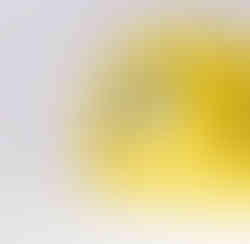Hoya globulosa (Cao Bang) – Information and Plant Care
Hoya globulosa (Cao Bang), a fascinating form of Hoya globulosa Hook.fil., stands out with distinctive pale straw or cream-colored flowers and pink coronal appendages. Native to the Cao Bang region of Vietnam, this resilient plant adapts to cooler conditions better than many of its relatives, making it an intriguing addition to any collection. Its oblong, leathery leaves taper to a point, contrasting elegantly with the soft-hued blooms that emit a pleasant fragrance. Below are care guidelines for a thriving Hoya globulosa (Cao Bang) indoors.
Features
- Flowers: Straw- or cream-colored blooms with a subtle pink tint on the coronal appendages, releasing a gentle fragrance.
- Leaves: Oblong, thick, and glossy foliage with a rounded base, tapering to a point.
- Growth Habit: Climbs or trails, perfect for hanging baskets or trellised arrangements.
- Origin: Native to Cao Bang in Vietnam, thriving in bright, indirect light and well-draining soil.
Hoya globulosa (Cao Bang) Plant Care
- Light: Bright, indirect light encourages vigorous growth and blooms. Direct sunlight may scorch leaves.
- Watering: Let the soil dry out slightly between waterings; avoid overwatering to prevent root rot.
- Humidity: Prefers higher humidity but adapts to average indoor levels. Instead of misting, place the plant near a humidifier if necessary.
- Temperature: Tolerates cooler conditions better than some relatives but still prefers 18–25°C; avoid extended periods below 15°C.
- Fertilization: Feed with a balanced, water-soluble fertilizer every 4–6 weeks during the growing season. Keep it moderate and consistent.
- Soil: Use a well-draining mix of orchid bark, perlite, and a little coco coir to maintain aeration around the roots.
- Pruning: Prune lightly to control size; remove damaged leaves to encourage fresh growth.
Common Issues and Solutions
- Root Rot: Often arises from excessive watering or poor drainage; use a potting mix that drains well and allow the soil to dry between waterings.
- Pests: Mealybugs, spider mites, and aphids are typical issues; treat with insecticidal soap , neem oil, or use beneficial insects and inspect regularly.
- Yellowing Leaves: Can result from overwatering or low light; adjust your care routine accordingly.
- Browning Leaf Edges: Usually indicates low humidity or irregular watering; improve humidity levels or water schedule.
Additional Notes
- Placement: Position Hoya globulosa (Cao Bang) in a bright, filtered spot where its trailing vines can cascade or climb elegantly.
- Propagation: Use healthy stem cuttings in water or well-draining soil until roots develop; maintain moderate humidity for successful rooting.
- Research: Mimicking the consistent humidity and moderate temperatures of its Cao Bang origin will help the plant reveal its full beauty.
Etymology
The genus Hoya honors English gardener and botanist Thomas Hoy (c. 1750–1822), who contributed to the study of tropical plants. The species epithet “globulosa” refers to the round, globe-like appearance of its flowers, while “Cao Bang” pinpoints its geographical origin in Vietnam’s Cao Bang region.
Hoya globulosa (villosa) Cao Bang
Hoya globulosa (Cao Bang) is approximately 15 cm long/tall and comes in a ⌀ 6 cm pot.

























































